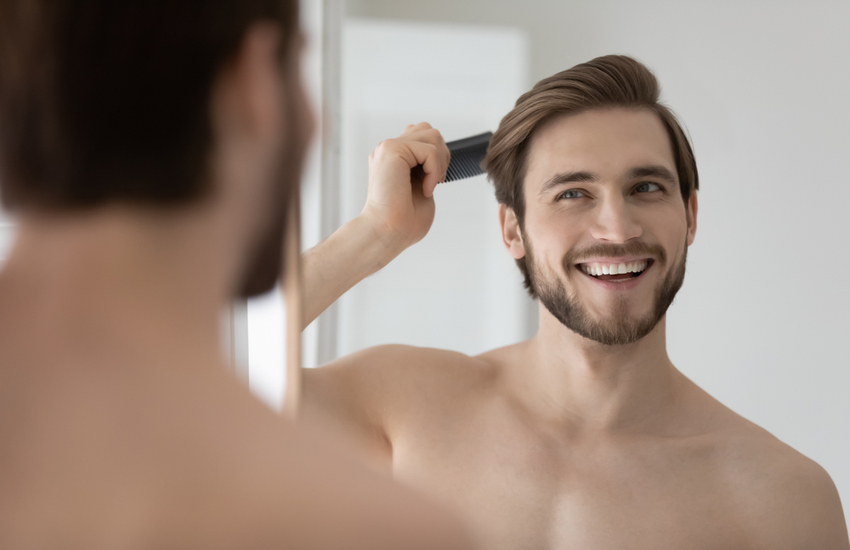
Do you see hair strands/patches around the shower drain or even tangled hair in your brush? Do you think you’ve done enough to control hair loss and hair thinning but never reaped satisfactory results?
PRP Therapy vs Hair Transplant
According to the National Alopecia Areata Foundation, around 6.8 million people are affected by Alopecia Areata (sudden hair loss that starts with one or more circular bald patches that may overlap), Androgenic Alopecia, or male/female pattern baldness, being the most common. There’s a receding hairline in men while an overall thinning of hair in women.
Nowadays, hair rejuvenation or restoration treatments such as Platelet-rich plasma Therapy (PRP) and hair transplantation are quite common. PRP is an emerging research therapy in which the doctor collects a patient’s blood, then, with the help of a centrifuge, separates the platelet-rich plasma from the rest of the blood. With ultrasound guidance, platelet-rich plasma is then injected in multiple locations on the patient’s scalp. It functions as a natural reservoir for growth that is essential to repair injured tissues (Galland). An entire course of PRP treatment for hair loss involves 3-4 sessions spaced eight weeks apart. You should notice new hair growth in four to six weeks following treatment. The effects of PRP are not permanent. You’ll need to get maintenance treatments every 6 to 12 months to continue seeing results. PRP is generally safe as it is the patient’s own plasma. Some possible side effects are local scalp irritation, minor discomfort, and possible infection; however, it is safely avoidable with proper precautions.
While modern hair transplantation has come a long way since the 1950s (Dua & Dua, 2010). It is a procedure in which hair is taken from thicker parts of the scalp or other parts of the body and grafted to thin or bald sections of the scalp. Since the process requires a strip of skin to be removed, it takes longer to heal, leaving a scar on the treated area. Most transplants are done with effective hair, so they might not effectively treat people with widespread thinning and baldness, hair loss due to chemotherapy, and thick scalp scars from any injuries (Jewell, 2019).
Trend or Future
Based on the research, PRP therapy is gaining popularity from sports to hair treatments (Dhillon, Schwarz, & Maloney, 2012). It can be a likely choice for people looking for non-surgical and non-invasive procedures. Also, the treatment uses the patient’s own natural elements without any foreign products, and it reaches difficult areas otherwise challenging to treat in hair treatments. As per the research, patients in their early stages of hair loss can reap more benefits from the treatment. However, results may vary person-to-person based on their overall health, including platelets and hair health.
It is always suggested to be mindful and never ignore any warning signs from the body. Never brush things under the carpet that require immediate attention in your life. What really helps is looking ahead before you reach a stage that makes your recovery difficult or even longer!
If you are looking for PRP hair loss treatment or want to learn more, you can sign up for a complimentary consultation here https://www.claritymedicalspa.com/prp-and-hairloss/.
References
National Alopecia Areata Foundation (n.d.). Retrieved from naaf.org/alopecia-areata
Dua, A. & Dua, K. (2010). Follicular unit extraction hair transplant. Journal of Cutaneous and Aesthetic Surgery, 3(2): 76–81. https://www.ncbi.nlm.nih.gov/pmc/articles/PMC2956961/
Jewell, T. (2019). Everything you need to know about hair transplants. Healthline. Retrieved from https://www.healthline.com/health/does-hair-transplant-work
Galland, M. W. (n.d.). What is PRP therapy? Orthopaedic Specialists of NC. Retrieved from https://orthonc.com/your-health/what-is-prp-therapy
Dhillon, R. S., Schwarz, E. M., & Maloney, M. D. (2012). Platelet-rich plasma therapy – future or trend? Arthritis Research & Therapy, 14. https://arthritis-research.biomedcentral.com/articles/10.1186/ar3914
